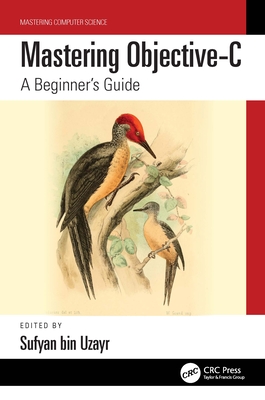图书简介
The second, thoroughly revised and expanded, edition of The SAGE Handbook of Visual Research Methods presents a wide-ranging exploration and overview of the field today. As in its first edition, the Handbook does not aim to present a consistent view or voice, but rather to exemplify diversity and contradictions in perspectives and techniques. The selection of chapters from the first edition have been fully updated to reflect current developments. New chapters to the second edition cover key topics including picture-sorting techniques, creative methods using artefacts, visual framing analysis, therapeutic uses of images, and various emerging digital technologies and online practices. At the core of all contributions are theoretical and methodological debates about the meanings and study of the visual, presented in vibrant accounts of research design, analytical techniques, fieldwork encounters and data presentation. This handbook presents a unique survey of the discipline that will be essential reading for scholars and students across the social and behavioural sciences, arts and humanities, and far beyond these disciplinary boundaries. The Handbook is organized into seven main sections: PART 1: FRAMING THE FIELD OF VISUAL RESEARCH PART 2: VISUAL AND SPATIAL DATA PRODUCTION METHODS AND TECHNOLOGIES PART 3: PARTICIPATORY AND SUBJECT-CENTERED APPROACHES PART 4: ANALYTICAL FRAMEWORKS AND PERSPECTIVES PART 5: MULTIMODAL AND MULTISENSORIAL RESEARCH PART 6: RESEARCHING ONLINE PRACTICES PART 7: COMMUNICATING THE VISUAL: FORMATS AND CONCERNS
Chapter 1: Visual Dialogues across Different Schools of ThoughtLuc Pauwels and Dawn Mannay \\ PART 1: FRAMING THE FIELD OF VISUAL RESEARCH \\ Chapter 2: An Integrated Conceptual and Methodological Framework for the Visual Study of Culture and SocietyLuc Pauwels \\ Chapter 3: Looking Two Ways: Mapping the Social Scientific Study of Visual CultureRichard Chalfen \\ Chapter 4: Visual Studies and Empirical Social InquiryJon Wagner \\ Chapter 5: Seeing Things: Visual Research and Material CultureJon Wagner \\ PART 2: VISUAL AND SPATIAL DATA PRODUCTION METHODS AND TECHNOLOGIES \\ Chapter 6: Rephotography for Documenting Social ChangeJon H. Rieger \\ Chapter 7: Repeat Photography in Landscape ResearchMark Klett \\ Chapter 8: Videography: An Interpretative Approach to Video-Recorded Micro-Social InteractionHubert Knoblauch and René Tuma \\ Chapter 9: Eye-Tracking as a Method of Visual ResearchClare Kirtley \\ Chapter 10: Expanding Cartographic Practices in the Social SciencesInnisfree McKinnon and Jessica McCallum Breen \\ Chapter 11: Participatory Geographic Information Systems in Visual ResearchWen Lin \\ Chapter 12: Visualization in Social AnalysisJohn Grady \\ Chapter 13: Visual Research Methods in the Design ProcessPrasad Boradkar and Tejas Dhadphale \\ PART 3: PARTICIPATORY AND SUBJECT-CENTERED APPROACHES \\ Chapter 14: Methodological Variation in Participant Visual Media ProductionRichard Chalfen \\ Chapter 15: Community-Based Participatory Video and Social ActionClaudia Mitchell and Naydene de Lange \\ Chapter 16: Digital Storytelling as a Research MethodSarah Flicker and Katie MacEntee \\ Chapter 17: Photovoice: A Critical IntroductionE-J Milne and Rachel Muir \\ Chapter 18: Using Drawing in Visual Research: Materializing the InvisiblePhilippa Lyon \\ Chapter 19: Picture-sorting Techniques: Card Sorting and Q-sort as Alternative and Complementary Approaches in Visual Social ResearchKatharina Lobinger and Cornelia Brantner \\ Chapter 20: Artefacts, Third Objects, Sandboxing and Figurines in the Doll’s HouseDawn Mannay \\ Chapter 21: The Therapeutic Use of Photography: Phototherapy and TherapeuticDel Loewenthal \\ PART 4: ANALYTICAL FRAMEWORKS AND PERSPECTIVES \\ Chapter 22: Quantitative Content Analysis of the VisualKaty Parry \\ Chapter 23: Visual Semiotics: Key Concepts and New DirectionsGiorgia Aiello \\ Chapter 24: Advances in Visual Rhetorical AnalysisLaurie Gries \\ Chapter 25: Iconology and Documentary Method in the Interpretation of Divergent Types of Visual MaterialsRalf Bohnsack \\ Chapter 26: Ethnomethodology and the Visual: Practices of Looking, Visualization, and Embodied ActionMichael Ball and Gregory Smith \\ Chapter 27: Methodological Approaches to Disclosing Historic PhotographsEric Margolis and Jeremy Rowe \\ Chapter 28: Researching Film and History: Sources, Methods, ApproachesJames Chapman \\ PART 5: MULTIMODAL AND MULTISENSORIAL RESEARCH \\ Chapter 29: Multimodality and Multimodal ResearchTheo van Leeuwen \\ Chapter 30: Visual and Multimodal Framing AnalysisRenée Moernaut, Jelle Mast and Luc Pauwels \\ Chapter 31: Multimodal Critical Discourse Analysis: how to reveal discourses of health and ethics in food packagingPer Ledin and David Machin \\ Chapter 32: How to ‘Read’ Images with Texts: The Graphic Novel CaseJan Baetens and Steven Surdiacourt \\ Chapter 33: A Multisensory Approach to Visual MethodsSarah Pink \\ Chapter 34: Rapid Prototyping for Social Science ResearchCarey Jewitt, Kerstin Leder Mackley, Douglas Atkinson and Sara Price \\ PART 6: RESEARCHING ONLINE PRACTICES \\ Chapter 35: A Multimodal Model for Exploring the Material Culture of Digital Networked Platforms and their PracticesLuc Pauwels \\ Chapter 36: Contemporary Landscapes of Visual and Digital Communication: The Interplay of Social, Semiotic, and Technological ChangeClarice Gualberto and Gunther Kress \\ Chapter 37: Understanding Online Images: Content, Context and Circulation as Analytical FociHelen Lomax and Janet Fink \\ Chapter 38: Visual and Affective Analysis of Social MediaKate Marston \\ PART 7: COMMUNICATING THE VISUAL: FORMATS AND CONCERNS \\ Chapter 39: Creating Visual Essays: Narrative and Thematic ApproachesTerence Heng \\ Chapter 40: Anthropological Filmmaking: An Empirical ArtDavid MacDougall \\ Chapter 41: Visual Ethnography and Emerging Digital TechnologiesPaolo, S. H. Favero \\ Chapter 42: Revisualizing Data: Engagement, Impact and Multimodal DisseminationDawn Mannay \\ Chapter 43: Making Arguments with Images: Visual Scholarship and Academic PublishingDarren Newbury \\ Chapter 44: Visual Ethics beyond the CrossroadsAndrew Clark \\ Chapter 45: Legal Issues of Using Images in ResearchJeremy Rowe
Trade Policy 买家须知
- 关于产品:
- ● 正版保障:本网站隶属于中国国际图书贸易集团公司,确保所有图书都是100%正版。
- ● 环保纸张:进口图书大多使用的都是环保轻型张,颜色偏黄,重量比较轻。
- ● 毛边版:即书翻页的地方,故意做成了参差不齐的样子,一般为精装版,更具收藏价值。
关于退换货:- 由于预订产品的特殊性,采购订单正式发订后,买方不得无故取消全部或部分产品的订购。
- 由于进口图书的特殊性,发生以下情况的,请直接拒收货物,由快递返回:
- ● 外包装破损/发错货/少发货/图书外观破损/图书配件不全(例如:光盘等)
并请在工作日通过电话400-008-1110联系我们。
- 签收后,如发生以下情况,请在签收后的5个工作日内联系客服办理退换货:
- ● 缺页/错页/错印/脱线
关于发货时间:- 一般情况下:
- ●【现货】 下单后48小时内由北京(库房)发出快递。
- ●【预订】【预售】下单后国外发货,到货时间预计5-8周左右,店铺默认中通快递,如需顺丰快递邮费到付。
- ● 需要开具发票的客户,发货时间可能在上述基础上再延后1-2个工作日(紧急发票需求,请联系010-68433105/3213);
- ● 如遇其他特殊原因,对发货时间有影响的,我们会第一时间在网站公告,敬请留意。
关于到货时间:- 由于进口图书入境入库后,都是委托第三方快递发货,所以我们只能保证在规定时间内发出,但无法为您保证确切的到货时间。
- ● 主要城市一般2-4天
- ● 偏远地区一般4-7天
关于接听咨询电话的时间:- 010-68433105/3213正常接听咨询电话的时间为:周一至周五上午8:30~下午5:00,周六、日及法定节假日休息,将无法接听来电,敬请谅解。
- 其它时间您也可以通过邮件联系我们:customer@readgo.cn,工作日会优先处理。
关于快递:- ● 已付款订单:主要由中通、宅急送负责派送,订单进度查询请拨打010-68433105/3213。
本书暂无推荐
本书暂无推荐













